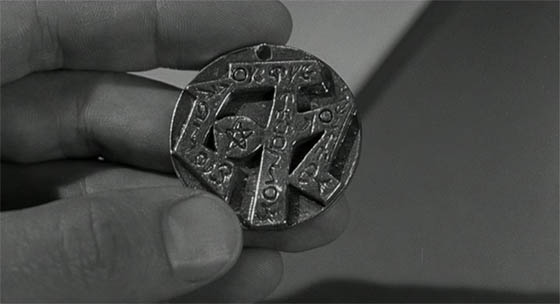 When last we checked in with William Castle, I suggested that Mr. Sardonicus (1961) was about one gimmick too far for the great schlockmeister. Gimmicks had made him famous, but they were becoming a prison, and starting to harm the content of his films rather than enhancing their enjoyment. That is, The Tingler (1959) and 13 Ghosts (1960) saw their gimmicks organically integrated into the content of the films. Homicidal (1961), however, did not need a “Fright Break,” and Mr. Sardonicus didn’t need a Choose Your Own Adventure-style ending (which was a cheat anyway). Cinema, at its best, isn’t a circus sideshow; it’s storytelling. Mr. Sardonicus had a good story to tell, but Castle didn’t trust the audience to be absorbed by his storytelling talents. His public persona was obligating him to sabotage his own filmmaking; or perhaps he was losing confidence in his own ability to tell a story that was engaging in and of itself (I would argue, for example, that 1959’s House on Haunted Hill survives just fine as entertainment without a prop skeleton leaping up into the theater, or your living room). With his next film, Zotz! (1962), it seems Castle was regaining his self-confidence. Or perhaps he needed to make a film like this to prove that he wasn’t just a low-rent P.T. Barnum.
When last we checked in with William Castle, I suggested that Mr. Sardonicus (1961) was about one gimmick too far for the great schlockmeister. Gimmicks had made him famous, but they were becoming a prison, and starting to harm the content of his films rather than enhancing their enjoyment. That is, The Tingler (1959) and 13 Ghosts (1960) saw their gimmicks organically integrated into the content of the films. Homicidal (1961), however, did not need a “Fright Break,” and Mr. Sardonicus didn’t need a Choose Your Own Adventure-style ending (which was a cheat anyway). Cinema, at its best, isn’t a circus sideshow; it’s storytelling. Mr. Sardonicus had a good story to tell, but Castle didn’t trust the audience to be absorbed by his storytelling talents. His public persona was obligating him to sabotage his own filmmaking; or perhaps he was losing confidence in his own ability to tell a story that was engaging in and of itself (I would argue, for example, that 1959’s House on Haunted Hill survives just fine as entertainment without a prop skeleton leaping up into the theater, or your living room). With his next film, Zotz! (1962), it seems Castle was regaining his self-confidence. Or perhaps he needed to make a film like this to prove that he wasn’t just a low-rent P.T. Barnum.
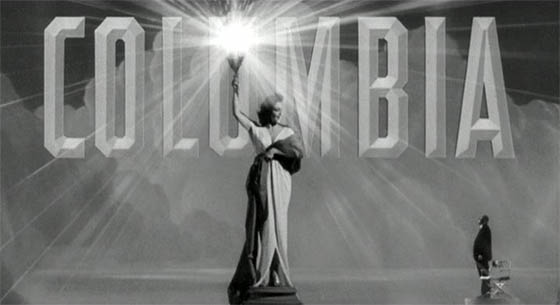 Mind you, Zotz! still had a promotional gimmick, but it was non-intrusive: Zotz “magic” coins were distributed to the populace, and children were encouraged to go see the film in order to figure out how their coins worked. At no point in the film does Castle himself appear to ask you to lift up your coin and scream “Zotz!” at the screen, or any such nonsense. Still, this is exactly the sort of film where one of his cameos wouldn’t seem out of place, and he can’t resist a very brief appearance, seated on his famous director’s chair at the bottom right-hand corner of the screen while the Columbia “Lady Liberty” logo is displayed. Lady Liberty turns to Castle and expresses bewilderment at the title of his latest film: “What’s ‘Zotz’?” This kind of pre-credits zaniness is pretty par for the course for a 60’s farce, but it’s unusual (and amusing) to see a studio’s mascot wilfully profaned. And yes, this is a comedy, which was a change of pace that Castle sorely needed. He had become famous for his horror films, but his career, which stretched back to the early 40’s, had touched all sorts of genres; it was time to reestablish himself as a capable, and flexible, director. At a glance, Zotz! seems like the perfect vehicle to achieve this. Since the plot involves a magic coin that grants its owner fantastic powers, it should offer plenty of opportunities for cinematic expression and creativity. Alas, only a fraction of that is realized.
Mind you, Zotz! still had a promotional gimmick, but it was non-intrusive: Zotz “magic” coins were distributed to the populace, and children were encouraged to go see the film in order to figure out how their coins worked. At no point in the film does Castle himself appear to ask you to lift up your coin and scream “Zotz!” at the screen, or any such nonsense. Still, this is exactly the sort of film where one of his cameos wouldn’t seem out of place, and he can’t resist a very brief appearance, seated on his famous director’s chair at the bottom right-hand corner of the screen while the Columbia “Lady Liberty” logo is displayed. Lady Liberty turns to Castle and expresses bewilderment at the title of his latest film: “What’s ‘Zotz’?” This kind of pre-credits zaniness is pretty par for the course for a 60’s farce, but it’s unusual (and amusing) to see a studio’s mascot wilfully profaned. And yes, this is a comedy, which was a change of pace that Castle sorely needed. He had become famous for his horror films, but his career, which stretched back to the early 40’s, had touched all sorts of genres; it was time to reestablish himself as a capable, and flexible, director. At a glance, Zotz! seems like the perfect vehicle to achieve this. Since the plot involves a magic coin that grants its owner fantastic powers, it should offer plenty of opportunities for cinematic expression and creativity. Alas, only a fraction of that is realized.
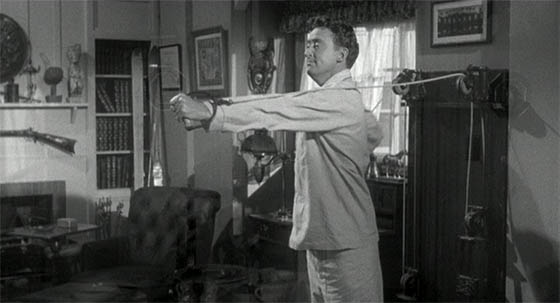 Castle teamed once more with screenwriter Ray Russell, adapting a novel by Walter Karig (who had contributed to the Nancy Drew series under the pseudonym “Carolyn Keene,” which had been used by various Nancy Drew ghost writers). The plot is sheer comic fantasy. Sleepy-eyed Tom Poston (now best known for his role on 80’s sitcom Newhart) plays Professor John Jones, a bachelor who cares only about raising his pretty teenage niece Cynthia (television actress Zeme North), and otherwise pays little attention to the world around him. He teaches archaeology and ancient languages to a class which, really, pays far more attention to the subject than they should. His chief rival is a fellow professor (Jim Backus) whose last name – “Kelgore!” – is spoken with the same kind of impotent rage that Jerry Seinfeld would later shout, “Newman!” Kelgore doesn’t seem like such a terrible fellow, however; just a little self-important, perhaps. So Professor Jones, archaeology expert, who has nothing of the personality of that other famous Professor Jones, is sheepishly maneuvering from one day to the next, when he suddenly receives a package from a fellow archaeologist: a coin with a magic star and some ancient writing. This occult object grants its owner three powers. One: say the word “Zotz!” and you can slow time. Two: point at someone, and you can cause them incredible pain with all the force of a blow to the stomach. Three: point at someone while saying “Zotz!” and the person will drop dead.
Castle teamed once more with screenwriter Ray Russell, adapting a novel by Walter Karig (who had contributed to the Nancy Drew series under the pseudonym “Carolyn Keene,” which had been used by various Nancy Drew ghost writers). The plot is sheer comic fantasy. Sleepy-eyed Tom Poston (now best known for his role on 80’s sitcom Newhart) plays Professor John Jones, a bachelor who cares only about raising his pretty teenage niece Cynthia (television actress Zeme North), and otherwise pays little attention to the world around him. He teaches archaeology and ancient languages to a class which, really, pays far more attention to the subject than they should. His chief rival is a fellow professor (Jim Backus) whose last name – “Kelgore!” – is spoken with the same kind of impotent rage that Jerry Seinfeld would later shout, “Newman!” Kelgore doesn’t seem like such a terrible fellow, however; just a little self-important, perhaps. So Professor Jones, archaeology expert, who has nothing of the personality of that other famous Professor Jones, is sheepishly maneuvering from one day to the next, when he suddenly receives a package from a fellow archaeologist: a coin with a magic star and some ancient writing. This occult object grants its owner three powers. One: say the word “Zotz!” and you can slow time. Two: point at someone, and you can cause them incredible pain with all the force of a blow to the stomach. Three: point at someone while saying “Zotz!” and the person will drop dead.
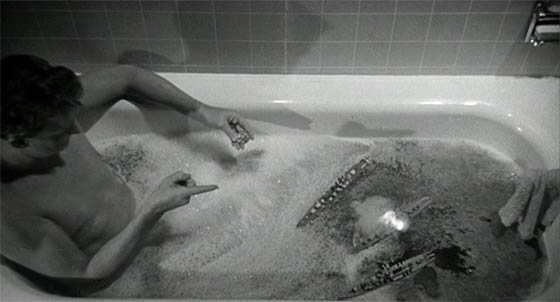 So, in summary, William Castle issued coins to young kids, told them they needed to see his latest film to learn how to use them, and then initiated them into a black magic cult where they were taught how to kill. But the gentle Professor Jones only practices the “killing” part on a moth, a lizard, and toy battleships he arranges in his bubble bath, so he can sink them one by one. He also uses his magical powers to watch a tennis match enacted in slow motion, just for the fun of it. Essentially, he does what the young kids in the audience would do, so Zotz! acts as harmless wish fulfillment. That even extends to scenes in which magic doesn’t play a part: Jones, without realizing he’s left his magical coin with his niece, lets laboratory mice loose at a dinner party, intending to kill them one by one with a “Zotz!” Instead, his magical incantations are ineffective as the mice wreak havoc at the party (one man loses his toupee, which then skirts around the room like a living thing, a mouse trapped invisibly beneath it). This kind of slapstick mayhem was a token scene in any Disney family comedy of the period, and indeed, there’s nothing Zotz! resembles so much as the Fred MacMurray Absent-Minded Professor films.
So, in summary, William Castle issued coins to young kids, told them they needed to see his latest film to learn how to use them, and then initiated them into a black magic cult where they were taught how to kill. But the gentle Professor Jones only practices the “killing” part on a moth, a lizard, and toy battleships he arranges in his bubble bath, so he can sink them one by one. He also uses his magical powers to watch a tennis match enacted in slow motion, just for the fun of it. Essentially, he does what the young kids in the audience would do, so Zotz! acts as harmless wish fulfillment. That even extends to scenes in which magic doesn’t play a part: Jones, without realizing he’s left his magical coin with his niece, lets laboratory mice loose at a dinner party, intending to kill them one by one with a “Zotz!” Instead, his magical incantations are ineffective as the mice wreak havoc at the party (one man loses his toupee, which then skirts around the room like a living thing, a mouse trapped invisibly beneath it). This kind of slapstick mayhem was a token scene in any Disney family comedy of the period, and indeed, there’s nothing Zotz! resembles so much as the Fred MacMurray Absent-Minded Professor films.
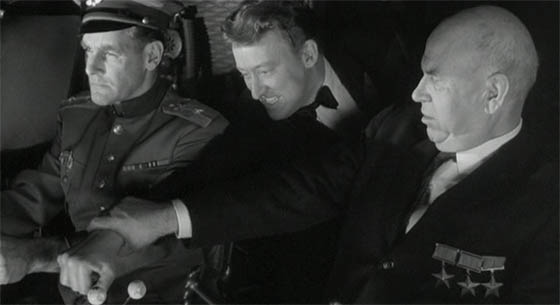 Eventually the plot takes a bizarre turn, as Professor Jones decides to fly to Washington to sell his secret to the government as a “weapon.” Naturally, the brass at the Pentagon aren’t interested in the powers of the professor’s magic finger, but a Communist spy witnesses its effectiveness (Jones almost brings down an airplane by pointing at it, just to prove his powers). After another disastrous dinner party – the professor slows Jim Backus’ speech to a deep-throated drawl – he’s met by the spy and assured that the government needs him right away. Mid-flight, Jones realizes he’s in the company of Commies when the lavatory sign peels away to reveal Cyrillic script. He threatens his captors with severe stomach pains unless they turn the plane around, and eventually he manages to liberate their hostages – his niece, as well as his love interest (Julia Meade) – by “Zotz!”-ing left and right. The finale involves Jones jumping off a roof and slowing his fall with the use of the coin, before that coin escapes both his grasp and the Communists’ when it slips into a storm drain.
Eventually the plot takes a bizarre turn, as Professor Jones decides to fly to Washington to sell his secret to the government as a “weapon.” Naturally, the brass at the Pentagon aren’t interested in the powers of the professor’s magic finger, but a Communist spy witnesses its effectiveness (Jones almost brings down an airplane by pointing at it, just to prove his powers). After another disastrous dinner party – the professor slows Jim Backus’ speech to a deep-throated drawl – he’s met by the spy and assured that the government needs him right away. Mid-flight, Jones realizes he’s in the company of Commies when the lavatory sign peels away to reveal Cyrillic script. He threatens his captors with severe stomach pains unless they turn the plane around, and eventually he manages to liberate their hostages – his niece, as well as his love interest (Julia Meade) – by “Zotz!”-ing left and right. The finale involves Jones jumping off a roof and slowing his fall with the use of the coin, before that coin escapes both his grasp and the Communists’ when it slips into a storm drain.
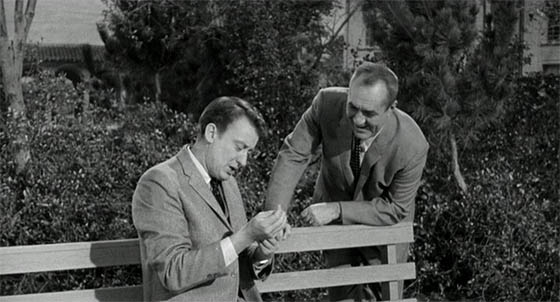 So how does Castle handle comedy? Pretty well, actually. Zotz! is disposable but fun, with a few genuine laughs, notably a scene in which the professor’s niece, with the coin on her person, wipes out a city block’s worth of pedestrians by innocuously pointing out of a convertible – or any scene in which ancient languages are laboriously explained (Castle isn’t afraid to have a book-smart protagonist, and the nerdy laughs fly). It helps considerably that he’s cast the small-screen star Poston, who demonstrates a Jimmy Stewart-like ability to carry a film with simple, understated charm. Backus is reliably smarmy as a (harmless) villain, and Julia Meade is sexy and smart as the professor who takes a liking to Jones, although an early scene in which she arrives naked at his home, desperate for clothes and shelter, suggests a more grown-up comedy that never quite arrives. There’s even a cameo from Margaret Dumont, Groucho Marx’s old foil. Will you forget this movie by the next day? Probably. But in the game to prove that he can stretch his talents beyond the horror genre, Castle scores plenty of points.
So how does Castle handle comedy? Pretty well, actually. Zotz! is disposable but fun, with a few genuine laughs, notably a scene in which the professor’s niece, with the coin on her person, wipes out a city block’s worth of pedestrians by innocuously pointing out of a convertible – or any scene in which ancient languages are laboriously explained (Castle isn’t afraid to have a book-smart protagonist, and the nerdy laughs fly). It helps considerably that he’s cast the small-screen star Poston, who demonstrates a Jimmy Stewart-like ability to carry a film with simple, understated charm. Backus is reliably smarmy as a (harmless) villain, and Julia Meade is sexy and smart as the professor who takes a liking to Jones, although an early scene in which she arrives naked at his home, desperate for clothes and shelter, suggests a more grown-up comedy that never quite arrives. There’s even a cameo from Margaret Dumont, Groucho Marx’s old foil. Will you forget this movie by the next day? Probably. But in the game to prove that he can stretch his talents beyond the horror genre, Castle scores plenty of points.









